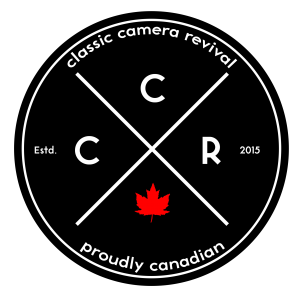In this episode, the gang sits down to discuss the art of Bulk Loading 35mm film. From the equipment to the techniques and the pros and cons, James, Bill, and John all share their own experiences and knowledge on the subject while Alex who has tried and disliked the process sits down and learns where he went wrong and the causes of his own frustrations.
Types of Bulk Loaders
To bulk load film, you need bulk loaders if you want to make your job an easy one, all three loaders can be found easily online, or at your local camera store’s darkroom section.
Lloyds
If there’s one that keeps it simple stupid it will be the Lloyds Bulk loader, very simple in design it features a light-tight space for your film felt traps between said light-tight space and where you load the cartridge, and one metal and plastic crank. That’s it four parts including the door. What the Lloyd’s Bulk Loader has going for it are simplicity and durability, you count the number of crank rotations, as per the manufacturer’s recommendations, for example, 31 crank turns equals 36 frames, no idea why that’s how it works. A few things to be mindful of, the felt traps have to be kept clean so you don’t wind up with scratches on the film emulation or base, tears and regret will ensue. Also, use two strips of masking tape, one to write what’s in the bulk loader in the first place and another to count off how many rolls of film you made. Usually, you can get 18 rolls of 36 frames of film out of a bulk roll regardless of brand.
The Alden/Watson Bulk Loader.
Mechanically more complicated than the Lloyds the Alden/Watson bulk loader has the advantage of having no part touch the film surface while loading. The Alden/Watson also can dial in how many exposures. Sadly the more recent examples of this bulk loader have the delicate build quality and are much more prone to failure with the crank. The earlier examples made of bakelite are more durable in construction, the later Alden/Watsons are more prone to failure due to cheap construction. The other problem is, this bulk loader is no longer offered new, so you’re buying used and you have to scout eBay, Facebook Market Place or Camera Shows if they come back.
The AP/Kaiser Bobinquick Bulk Loader
The most expensive and sophisticated of the bulk loaders, also the youngest in design and like the Lloyds, you can also buy new. Not only can you dial in the number of frames you want you to have a second dial showing how much of your bulk roll is left. With no personal experience on the AP/Kaiser bulk loader, the real only downside is the cost as being the most expensive of the three.
Tips, Tricks, and Techniques for Bulk Loading
Bulk loading film Tips and Tricks
- Keep it clean! Check felt traps in cassettes (and Lloyd-style loaders) for dust and debris
- Don’t overuse cassettes – they don’t last forever (excepting specially made brass cassettes for certain cameras)
- Use good tape to tape film to spool! (Not painters tape, gaffers tape or cheap scotch tape)
- Use enough tape to ensure the film will stay attached.
- Keep the film straight when attaching to the spool so it will wind smoothly.
- You should never have to force anything; if the film does not wind smoothly, start over
- Label your loader (especially if you have multiple loaders)
- When loading our film, allow 4 extra frames for the film leader (e.g. wind 40 frames for a 36 exposure roll).
- When cutting the leader with scissors, cut between sprockets, and round the edges to minimize chances of film snagging in the camera when loading.
- Bulk loaders are called daylight loaders, but don’t abuse the privilege; Don’t load in blinding sun.
Some good Youtube links on how to load:
Watson
Lloyds
Is it Worth it – The Pros and Cons of Bulk Rolling Film
On average you’ll get 18 rolls of 36 exposure canisters with a 100-foot roll of 135 film. But is it worth it well it depends? If you’re a fan of a particular film stock then yes it probably is, if variety is the spice of your life then it’s probably not for you. Bulk rolling film requires a commitment to that particular film stock for at least 18 rolls, add on top of that the cost of a bulk roller that will run you about $75 CAD plus a stock of canisters should you decide to go with new reusable ones. If you meet those basic criteria, you will save anywhere from about 10% to 40% compared to buying individually packaged retail rolls. The discount varies depending on the brand, shooting FP4 would net you the most savings at about 45% and the least if you’re a TMax shooter at about 10%. If you like to shoot expired films that are more commonly available in bulk rolls then roll away too! If you’re not prepared to commit to a particular stock but still want to roll your own, you’ll need to account for the cost of additional loaders and cassettes. Besides the cost savings of rolling your own film is you’re free to roll anywhere from 1 to 36 shootable frames, so if you shoot smaller projects on 135 there is a benefit of flexibility.
Good luck and keep on rollin’
Want a subscription to SilverGrain Classics and are a fan of Classic Camera Revival? Visit their shop online and buy a magazine or a subscription? Looking for a good spot to get your gear and material fix check out Burlington Camera (Burlington, ON), Downtown Camera (Toronto, ON), Film Plus (Toronto, ON), Belle Arte Camera (Hamilton, ON), Pond’s FotoSource (Guleph, ON), Foto Art Camera (Owen Sound, ON). Out West there’s Kerrisdale Cameras (BC), The Camera Store (Calgary, AB) and Beau Photo Supply (Vancouver, BC). Additionally you can order online at Argentix (Quebec), buyfilm.ca (Ontario), the Film Photography Project or Freestyle Photographic. Looking for development options, check out these labs that have our support, Boréalis Photo Lab, Old School Photo Lab, The Darkroom, and Film Rescue International.
Also you can connect with us through email: classiccamerarevivial[at]gmail[dot]com or by Facebook, we’re at Classic Camera Revival, Twitter @ccamerarevival, and Instagram (@classiccamerarevival)!

